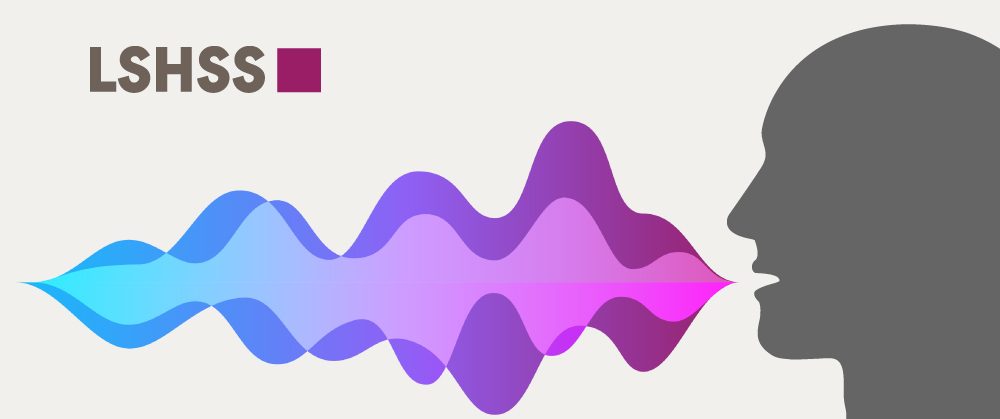Speech sound disorder (SSD) is the most commonly diagnosed pediatric communication disorder. In fact, survey results indicate that as many as 90% of school-based speech-language pathologists (SLPs) have a child with SSD on their caseload.
The latest forum in Language, Speech, and Hearing Services in Schools (LSHSS) focuses on the variable nature of SSD, providing solutions outside of typical articulation therapy. Guest editors Kelly Farquharson and Sherine Tambyraja write that each article includes tools that SLPs can use in their daily work “such as therapy activities, tips for goal writing or progress monitoring, assessment processes, and frameworks for conversations with parents,” (Farquharson & Tambyraja, 2022, p. 627)
Choosing the Right SSD Treatment
The forum opens with an introduction by the guest editors, discussing the importance of implementing new approaches to SSD treatment. Then, Storkel compares traditional and alternative treatment approaches and presents a case study where an alternative approach is more effective.
Two articles focus on the role of speech perception in SSDs. Brosseau-Lapré and Roepke suggest that SLPs can maximize their therapy time by working on speech perception and phonological awareness in addition to speech sound production. Next, Cabbage and Hitchcock focus on how to incorporate speech perception assessment into treatment for children with residual SSD.
DeVeney and Peterkin write that there is limited evidence for intervention approaches in children with SSD under 3 years old. The authors provide clinicians with tools to use the information that they have to support their clinical decision making when working with younger children.
Two articles focused on the intersection of research and clinic work for children with SSD. First, Farquharson and colleagues found that children in crowded clinical sessions or with comorbid diagnoses received fewer speech sound trials in therapy sessions. Farquharson stressed that understanding these dynamics is important when researchers plan interventions for SLPs to implement. Next, Baker et al. reviewed SSD intervention literature, highlighting a need for greater consistency and detail in the measures and tools used to evaluate intervention outcomes.
McCormack and colleagues provide SLPs with a novel way to measure the social and emotional effects of an SSD, asking children with SSDs to draw pictures of themselves talking and finding emotions in the pictures. Then, McLeod et al. showed that bilingual Vietnamese–English speakers increased speech sound production accuracy in English while maintaining their home language after an 8-hour online group program.
The final article focuses on children with SSD who have lateral lisps, producing errors that are notoriously difficult to treat. Overby and colleagues surveyed SLPs about their perspectives, challenges, and what evidence-based practices they used. These survey results can help guide further research.
Tools for School-Based Practitioners
Speech sound disorder is heterogeneous; there is no one-size-fits-all approach to treatment. In this forum, Farquharson and Tambyraja provide the latest tools for school-based SLPs—who, they point out, are already busy. “We offer this forum to our school-based SLP colleagues who work hard to implement best practices for the myriad of populations they treat,” they write. “We see your dedication to the profession and support your tireless clinical endeavors” (Farquharson & Tambyraja, 2022, p. 630).
We’d like to thank Drs. Farquharson and Tambyraja for their work developing this forum and contributing to ASHA Journals’ robust implementation science offerings. You can read the entire forum here, or explore the individual articles below. We hope this forum provides tools that pediatric SLPs can use in the coming school year!
Explore the Forum
Baker, E., Masso, S., Huynh, K., & Sugden, E. (2022). Optimizing outcomes for children with phonological impairment: A systematic search and review of outcome and experience measures reported in intervention research. Language, Speech, and Hearing Services in the Schools, 53(3), 732–748. https://doi.org/10.1044/2022_LSHSS-21-00132
Brosseau-Lapré, F., &, Roepke, E. (2022). Implementing speech perception and phonological awareness intervention for children with speech sound disorders. Language, Speech, and Hearing Services in the Schools, 53(3), 646–658. https://doi.org/10.1044/2022_LSHSS-21-00117
Cabbage, K. L., & Hitchcock, E. R. (2022). Clinical considerations for speech perception in school-age children with speech sound disorders: A review of the current literature. Language, Speech, and Hearing Services in the Schools, 53(3), 768–785. https://doi.org/10.1044/2022_LSHSS-21-00120
DeVeney, S. L., & Peterkin, K. (2022). Facing a clinical challenge: Limited empirical support for toddler speech sound production intervention approaches. Language, Speech, and Hearing Services in the Schools, 53(3), 659–674. https://doi.org/10.1044/2022_LSHSS-21-00104
Farquharson, K., McIlraith, A., Tambyraja, S., & Constantino, C. (2022). Using the experience sampling method to examine the details of dosage in school-based speech sound therapy. Language, Speech, and Hearing Services in the Schools, 53(3), 698–712. https://doi.org/10.1044/2021_LSHSS-21-00130
Farquharson, K., & Tambyraja, S. (2022). Introduction: Innovations in treatment for children with speech sound disorders. Language, Speech, and Hearing Services in the Schools, 53(3), 627–631. https://doi.org/10.1044/2022_LSHSS-22-00065
McCormack, J., McLeod, S., Harrison, L. J., & Holliday, E. L. (2022). Drawing talking: Listening to children with speech sound disorders. Language, Speech, and Hearing Services in the Schools, 53(3), 713–731. https://doi.org/10.1044/2021_LSHSS-21-00140
McLeod, S., Verdon, S., Tran, V. H., Margetson, K., & Wang, C. (2022). SuperSpeech: Multilingual speech and language maintenance intervention for Vietnamese–Australian children and families via telepractice. Language, Speech, and Hearing Services in the Schools, 53(3), 675–697. https://doi.org/10.1044/2021_LSHSS-21-00146
Overby, M. S., Mazeika, S., DiFazio, M., Ioli, J., Birch, K., & Devorace, L. (2022). Clinicians’ perspectives of treatment for lateralization errors: A quantitative and qualitative Study. Language, Speech, and Hearing Services in the Schools, 53(3), 749–767. https://doi.org/10.1044/2022_LSHSS-21-00109
Storkel, H. L. (2022). Minimal, maximal, or multiple: Which contrastive intervention approach to use with children with speech sound disorders?. Language, Speech, and Hearing Services in the Schools, 53(3), 632–645. https://doi.org/10.1044/2021_LSHSS-21-00105
References
Farquharson, K., & Tambyraja, S. (2022). Introduction: Innovations in treatment for children with speech sound disorders. Language, Speech, and Hearing Services in the Schools, 53(3), 627–631. https://pubs.asha.org/doi/10.1044/2022_LSHSS-22-00065









